Superfund Research Program
SRP's greatest assets are the students and professionals our researchers train. We have been able to capture several success stories of past graduates who have continued on to successful careers in various sectors. These stories are highlights from our program and show the variety of experiences our trainees encounter.
Collaborative Research Experiences and Training Forge Scientific Careers
Since 2011, the K.C. Donnelly Externship Award, provided by the NIEHS Superfund Research Program (SRP), has enabled graduate students and postdoctoral fellows to learn from experts across institutional lines. This opportunity, given to several people each year, equips them with the skills and connections critical to addressing complex environmental health challenges.
The award is named for the late Texas A&M University (TAMU) researcher Kirby (K.C.) Donnelly, Ph.D., who championed mentorship and partnership. In Donnelly’s honor, the awards empower SRP-funded trainees at a formative career stage to conduct research at other SRP-funded institutions, government laboratories, and state, local, or tribal agencies.
Over a decade later, SRP reflects on this award’s legacy. Since the externship’s inception, 86 trainees have received a K.C. Donnelly award. Many of them have since leveraged their SRP experiences to launch successful careers at other academic institutions, engineering firms, and government agencies.
A Lasting Legacy in Science and Mentorship
On the 25th anniversary of the death of Karen Wetterhahn, Ph.D., the NIEHS Superfund Research Program (SRP) reflects on her continued legacy in scientific excellence and mentorship. She died June 8, 1997, age 48, following dimethylmercury poisoning from a laboratory accident.
Wetterhahn devoted her career to understanding how certain metals initiate cancer and other human diseases at the molecular level. She also fostered interdisciplinary links between biology, chemistry, environmental studies, engineering, and medicine.
As a tribute to this legacy, in 1998, SRP created the annual Karen Wetterhahn Memorial Award to recognize and support outstanding early career scientists.
Riley Behan-Bush, University of Iowa
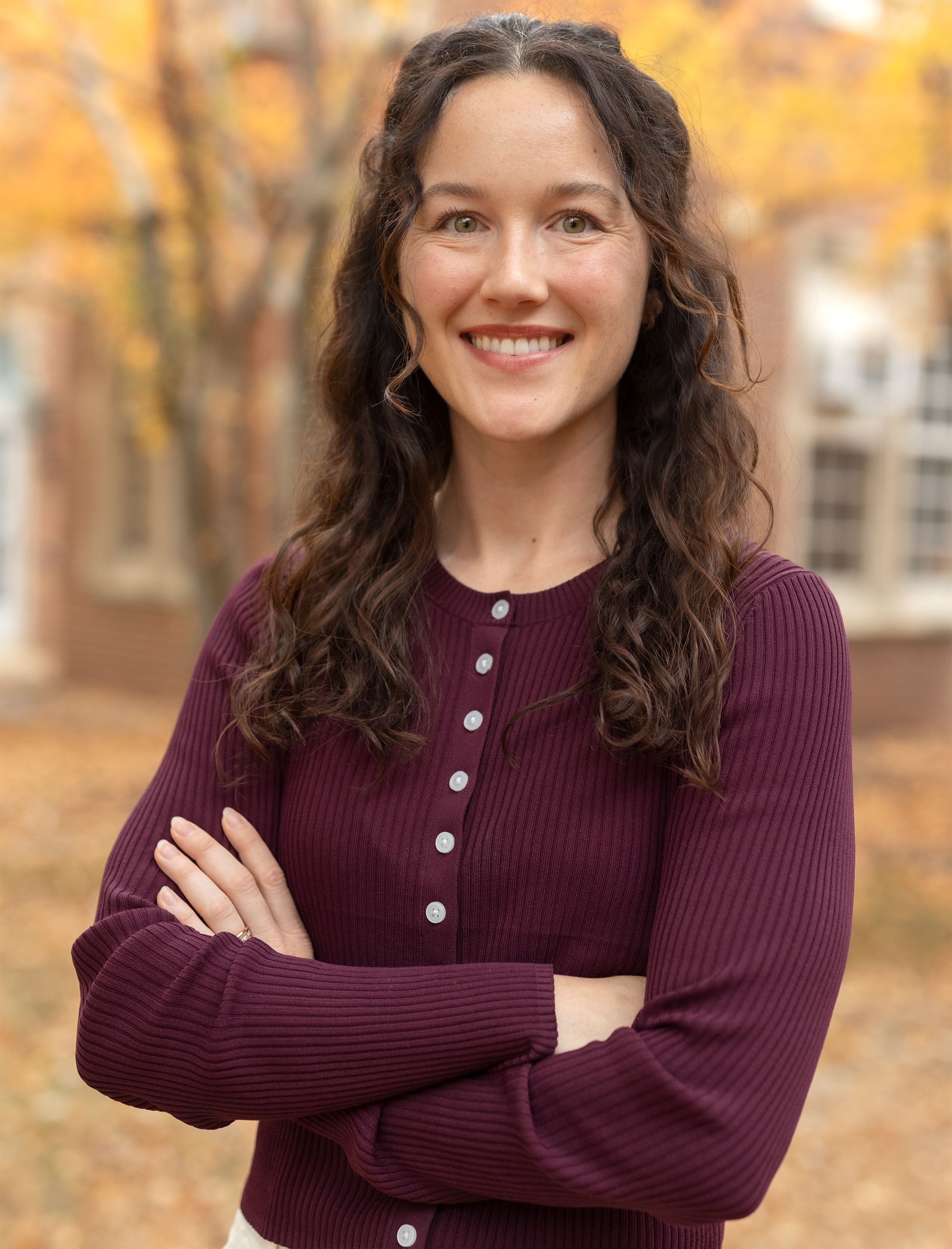
Riley Behan-Bush is a trainee at the University of Iowa SRP Center, who is mentored by James Ankrum.
What is the focus of your research at the University of Iowa SRP Center?
My research focuses on the impact of PCBs exposure on the development of metabolic conditions, such as diabetes and obesity. My work investigates how PCBs influence immune system cells called macrophages. My ultimate goal is to uncover new mechanisms driving PCB-induced metabolic disease.
How did you become interested in this work?
As an M.D.-Ph.D. trainee, I had the unique opportunity to complete some of my clinical training before starting my Ph.D. This experience allowed me to witness firsthand the significant impact of metabolic dysfunction on individuals’ health. I became interested in the factors driving these conditions, particularly those beyond an individual’s control, such as exposure to environmental toxicants. Unfortunately, most medical providers don’t consider environmental exposures, so I was motivated to pursue a project that would fill this gap and provide more information about how the chemicals in our environment impact human disease.
Tell us about the recent NIH Kirschstein-NRSA (F-30) award you received and what it meant to you.
The process of preparing my F-30 grant application was one of the most important and rewarding experiences of my graduate training. I am deeply honored to have received this award, and I am confident that the training it will facilitate over the next three years will help me achieve both my short-term research goals and long-term goals of becoming a well-rounded physician-scientist.
What factors have contributed most to your growth as a researcher throughout your time as an SRP trainee?
I attribute so much of my success and growth to my lab, particularly my mentor, James Ankrum, and the graduate and undergraduate students I work with daily. I feel incredibly fortunate to be surrounded by such talented scientists and supportive individuals who inspire me to improve and strive for excellence every day.
What is one piece of advice that you have for other SRP trainees?
Keep an open mind and let your project guide you. SRP work is inherently multidisciplinary, which often means stepping outside your comfort zone to explore areas of science you may not have considered before. Embrace the journey, even if it feels non-linear, because every experience contributes to your growth.
Brendan O'Leary, Wayne State University
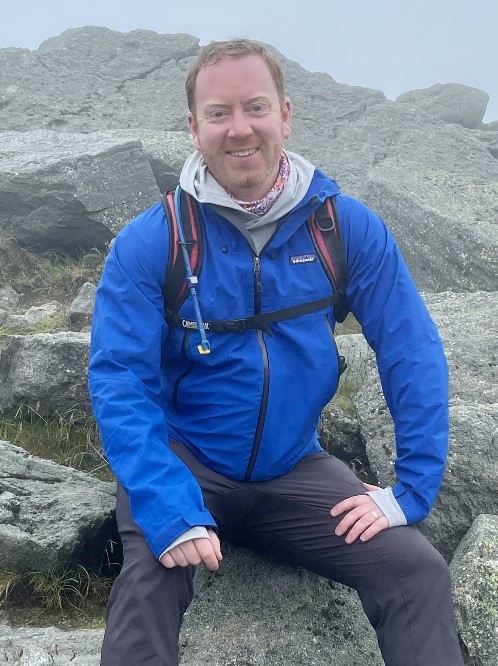
Brendan O’Leary is a trainee mentored by Carol Miller at the Wayne State University SRP Center.
What is the focus of your research at the Wayne State University SRP Center?
I am studying how contaminants move through groundwater, air, and soil, particularly in urban environments, and their potential impacts on human health. Currently, I am developing field screening techniques and modeling approaches to understand how volatile organic compounds (VOCs) are transported below ground. One key focus is the development of a method called phytoscreening, which uses plant roots to detect the contaminants.
How did you become interested in this work?
Mentorship sparked my interest in this field. While pursuing degrees in geology and civil engineering, I investigated the role of air pollution in preterm birth rates and asthma hospitalizations. This work opened the possibilities of how applied earth science could help us understand the impacts of chemical exposures on public health and urban communities. This led to a dual Ph.D. in civil engineering and urban sustainability with research on VOC fate and transport in urban neighborhoods, under the advising of Carol Miller.
Tell us about a recent publication or award you received and what it meant to you.
I was fortunate to receive the K.C. Donnelly Externship Award Supplement and the opportunity to work with Kelly Pennell and SRP trainee, Herman Tay, at the University of Kentucky (UK) SRP center. With this externship, I learned to use the AROMA-VOC — a real time VOC measurement tool — and brought it to our field sites in Detroit, Michigan. While many collaborations are moving online, the opportunity to have support for going to the UK SRP Center and conducting collaborative fieldwork at active VOC urban neighborhoods enhanced my learning and understanding of using real-time devices in the field.
What factors have contributed most to your growth as a researcher throughout your time as an SRP trainee?
The most significant factors contributing to my growth as a researcher have been strong mentorship, interdisciplinary collaboration, and hands-on field experience. Mentorships from my postdoctoral advisors, Carol Miller and Glen Hood, have not only guided my technical development, but also helped provide models for me to independently lead research projects like the K.C. Donnelly. The interdisciplinary collaboration at Wayne State has expanded my perspective, allowing me to tackle complex environmental challenges from multiple angles, integrating geology, civil engineering, and biological sciences. Finally, hands-on fieldwork — especially deploying advanced tools like the AROMA-VOC in urban environments — has been instrumental in expanding my technical field background.
What is one piece of advice that you have for other SRP trainees?
Stay curious and be open to exploring areas outside your immediate field of study or expertise. Many of my successes were through collaborations with peers outside my home department and usually through informal conversations. I encourage trainees to engage with others outside of the lab!
Juliana Agudelo Areiza, University of Rhode Island
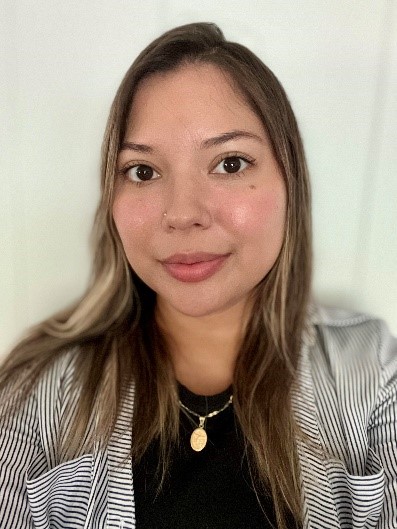
Juliana Agudelo Areiza is a trainee at the University of Rhode Island (URI) SRP Center, mentored by Angela Slitt.
What is the focus of your research at the URI SRP Center?
My research focuses on evaluating the presence of PFAS in human liver samples. PFAS are a large class of persistent environmental toxicants. Some legacy PFAS, like perfluorooctanesulfonic acid (PFOS) and perfluorooctanoic acid (PFOA), are known to cause adverse health effects and accumulate in the liver of many species, but little is known about PFAS concentrations in human livers. Through my research, I hope to better understand how PFAS manufacturing shifts have impacted human exposure, quantify how PFAS are accumulating in the liver, and reveal the biological impact of PFAS exposure on a molecular level.
How did you become interested in this work?
I became interested in scientific research after completing a summer internship that introduced me to PFAS and environmental toxicology. Upon learning that exposure to some PFAS can result in severe adverse health effects and that PFAS can stay in the body and the environment for years without degrading, I wanted to learn more about them. Knowing that PFAS are still produced and that we only have risk assessment data on a handful of PFAS, I knew right away that I wanted to pursue a doctorate that would allow me to evaluate which PFAS are getting into human bodies and understand how these may be associated with liver toxicity.
You recently received two awards, the 2024 Society of Toxicology Risk Assessment Specialty Section John Doull Risk Assessment Endowment Award and the 2024 Society of Toxicology Mixtures Specialty Section Best Student Abstract Award. Tell us about them and what they meant to you.
Receiving these prestigious awards was extremely meaningful for me because they demonstrated that my project, which I put so much work into, has important implications and contributions to the toxicology field. My project and the awards emphasize the importance of assessing human PFAS exposure in the liver and the need to PFAS as mixtures to improve risk assessments.
What factors have contributed most to your growth as a researcher throughout your time as an SRP trainee?
Having an amazing support system and resources has made a profound difference in my growth as a researcher throughout my time as an SRP trainee. I feel lucky to work with and learn from our own URI team of brilliant scientists across a variety of scientific disciplines. We are a highly collaborative center, which has allowed me to complete laboratory rotations in other URI SRP members’ labs and at collaborating partner labs, like the EPA as part of the K.C. Donnelly Externship Award. My mentor, Angela Slitt, is highly supportive and has always encouraged me to learn other techniques, collaborate in interdisciplinary projects, and attend regional and national scientific conferences which has really made me a well-rounded young scientist.
What is one piece of advice that you have for other SRP trainees?
One piece of advice that I have for other SRP trainees is to have grit. As a first-generation college student, I have come to learn that impactful research comes with many challenges, but you have to keep going and have faith in your capabilities.
Christopher Olivares, University of Arizona
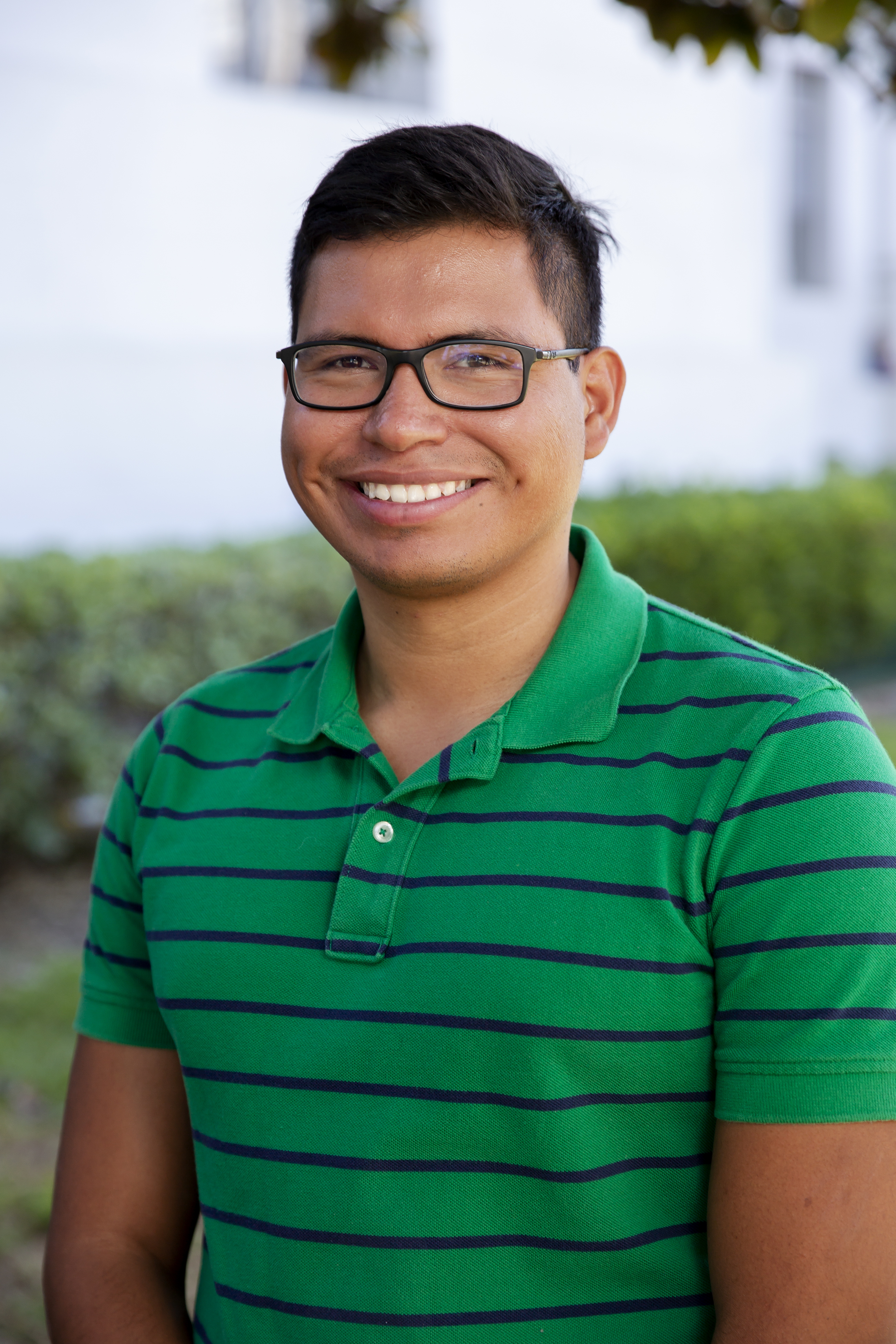
Christopher Olivares is a trainee at the University of Arizona SRP Center, mentored by Jim Field. Olivares is now an assistant professor at the University of California, Irvine in the department of Civil and Environmental Engineering.
What is the purpose of your current research?
I am currently evaluating how microbes and organic pollutants interact, particularly in the context of climate-related disasters. Specifically, we are looking at microbial markers of PFAS in soils and groundwater and are studying how wildfires change the water microbiome. We also use data science tools to identify hotspots of PFAS unmeasured in previous years and to predict the concentration of PFAS in wastewater.
What is the focus of your research at the University of Arizona SRP Center?
I researched microbial transformations under different conditions with Jim Field and Reyes Sierra-Alvarez. I also learned about zebrafish embryo toxicity thanks to the K.C. Donnelly Externship and the Robyn Tanguay Lab at the Oregon State University (OSU) SRP Center.
How did you become interested in this work?
I grew up in Mexico City, but visited my cousins many summers in South Tuscon, a community impacted by nearby Superfund sites and trichloroethylene, or TCE, which is a widely used industrial chemical. As an undergraduate, I later learned about microbial remediation, and I became fascinated that microorganisms were capable of cleaning up industrial contaminants.
How did your time as a trainee at the University of Arizona SRP Center inform your current work?
It helped me think more holistically about my research and about having a research vision that integrates environmental health, community engagement, and the need of environmental literacy.
Could you tell us more about the writing skills workshop that you recently hosted?
A group of graduate students, postdocs, and faculty met last year at the University of California, Santa Cruz to increase participation of students in STEM and academia. It became clear that a common challenge was the lack of formal training in proposal writing and other topics relevant to academia. We wanted to share broadly some tips, resources, and opportunities to connect trainees and early career faculty, and to practice some of these skills.
What factors have contributed most to your growth as a researcher throughout your time as an SRP trainee?
The opportunities available through the community engagement core helped my growth, and still continues to ground my research and service. At the University of Arizona, I had the opportunity to volunteer in translating fact sheets into Spanish and help to develop educational modules. I am also very thankful for Stephanie Cormier's invitation to allow me to cohost a session as a student with her in the SRP Annual Meeting.
Lucie Ford, Texas A&M University
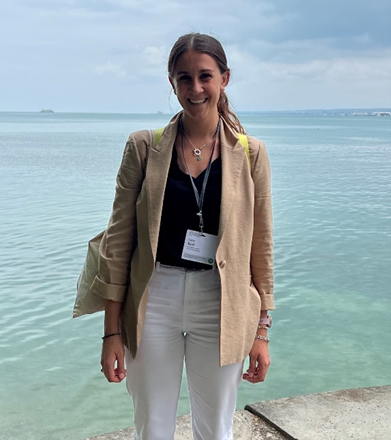
Lucie Ford is a trainee at the Texas A&M University (TAMU) SRP Center, mentored by Ivan Rusyn.
What is the focus of your research at the TAMU SRP Center?
My research uses various cell-based models that mimic either individual organs or heterogenous human populations to test both individual environmental chemicals and mixtures. Most recently, we have been modeling exposure scenarios for a large number of PFAS chemicals, individually and in mixtures.
How did you become interested in this work?
During my undergraduate career, I had the opportunity to participate in a summer fellowship at the University of Rhode Island in Angela Slitt’s lab. This experience was my first introduction to the field of toxicology, where my summer research focused on evaluating the potential toxicity of various PFAS using human liver cells. This research motivated me to explore and apply to toxicology graduate programs during the fall semester. My current research involves PFAS, so it feels like a full circle from where my research interests initially started.
Tell us about the awards you received at the Society of Toxicology Annual Meeting and what they meant to you.
Recently, I was honored to receive the Graduate Student Award from the In Vitro and Alternative Methods Specialty Section of the Society of Toxicology. It was gratifying to witness the enthusiasm for our research on PFAS Mixtures and the in vitro approaches we use. The interest in our research and methodologies is not only motivating, but also excited me to share our findings with others in the field.
What factors have contributed most to your growth as a researcher throughout your time as an SRP trainee?
The mentorship that I have received from my principal investigator, Ivan Rusyn, as well as my other committee members — Weihsueh Chiu, Fred Wright, and Stephen Safe — has been instrumental in my professional development. Additionally, the networking opportunities to connect with professionals in toxicology across various sectors along with fellow students have been invaluable for my growth as a student researcher.
What is one piece of advice that you have for other SRP trainees?
Engage and participate in networking opportunities both at conferences and within SRP itself. These experiences are an excellent way to expand your professional network and foster collaborations that can lead to opportunities after graduate school.
Dillon King, Duke University
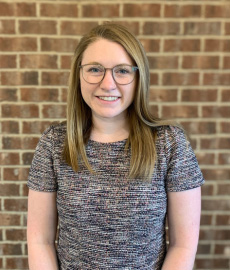
Dillon King is a former Duke University trainee mentored by Heather Stapleton. King is now a postdoctoral fellow at NIEHS.
What is the focus of your research at the Duke University SRP Center?
I studied how environmental exposures damage mitochondria — the organelle that makes energy for our cells. My work specifically focused on mitochondrial DNA (mtDNA) and how mitochondria deal with mtDNA damage, particularly from chemicals like benzo[a]pyrene or UV irradiation.
How did you become interested in this work?
As an undergraduate student majoring in marine science, I had taken an environmental toxicology course. I then wanted to know more about the health impacts of pollution, so I got an additional degree in biochemistry. I am passionate about protecting the environment and people, and I believe these fields allow me to study how the environment and humans impact each other.
Tell us about a recent accomplishment and what it meant to you.
I recently defended my dissertation and accepted a position as a postdoctoral fellow at the NIEHS. Finishing my dissertation and seeing the culmination of over five years of hard work was very rewarding. I am very proud of all the work I put into my graduate studies and research, and I am grateful to all of the people who helped me along the way.
What factors have contributed most to your growth as a researcher throughout your time as an SRP trainee?
The help and encouragement of my mentors, Joel Meyer and Susan Murphy. They encouraged me to be creative with my science, try out experiments, and explore hypotheses that I was really interested in. Being able to direct the trajectory of my research gave me confidence in my ability to lead projects and come up with ideas.
What is one piece of advice that you have for other SRP trainees?
Try as many new things as you can! Some of my favorite activities on campus during graduate school were collaborations that I had with other labs and non-science related activities that I did. You get to learn what you like and what you don’t like. Getting involved with science communication, outreach, mentorship, teaching, and science outside of your field will help you figure out what you want to do.
Junming Shi, University of California Berkeley
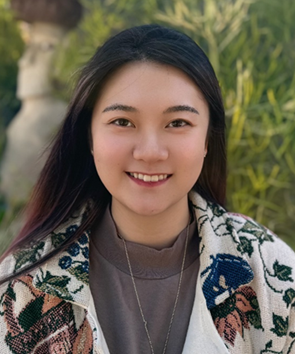
Junming (Seraphina) Shi is a trainee at the University of California (UC) Berkeley SRP Center who is mentored by Alan Hubbard and Haiyan Huang.
What is the focus of your research at the UC Berkeley SRP Center?
My research at the UC Berkeley SRP Center involves the development, exploration, and application of statistical machine learning methods and algorithms to explore how genetics and environmental factors contribute to health outcomes, with a particular emphasis on cancer.
How did you become interested in this work?
My interest in this field stems from a longstanding passion for leveraging real-world data to enhance our healthcare system. The potential to make meaningful improvements in patient care and outcomes through data-driven insights has always fascinated me.
Tell us about the award your group received and what it meant to you.
Securing third place in the NIH Long COVID Computational Challenge was a moment of immense pride for our UC Berkeley School of Public Health team. This competition was more than just an opportunity to showcase our skills; it was a collaborative effort among statisticians and epidemiologists to uncover the potential drivers of long COVID and develop predictive models for it. Winning third place was not only a testament to our team's hard work and innovation but also significantly enhanced my understanding of long COVID. This experience has broadened my perspective on my capabilities and the potential to aid in understanding diseases and advancing healthcare systems.
What factors have contributed most to your growth as a researcher throughout your time as an SRP trainee?
Several things have really helped me grow as a researcher. Talking regularly with my mentor and peers and being naturally curious have been key. Knowing when to ask for help to move forward faster, finding different resources on my own, and always trying to learn more about the overall picture while paying attention to small details have all been important. These factors have helped me learn a lot and get better at my research.
Paige Haley, University of New Mexico
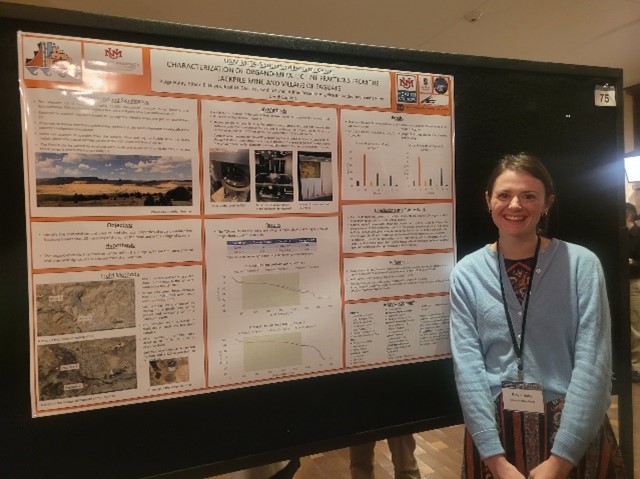
Paige Haley is a trainee at the University of New Mexico (UNM) SRP Center who is mentored by Jose Cerrato.
What is the focus of your research at the UNM SRP Center?
My research is focused on the impact of the Jackpile Mine on the village of Paguate, New Mexico. Specifically, I am working to learn more about the fine particles of the soil that have high levels of uranium and are carried easily by wind.
How did you become interested in this work?
I have always been passionate about environmental research. I grew up on Chesapeake Bay in Virginia, so I was exposed to the idea of using scientific research to help the earth from a young age. As for uranium specifically, some of my family lives in an area of Virginia with high concentrations of uranium in the soil, so I have a personal connection to the subject.
Tell us about the poster award you received at the latest SRP Annual Meeting and what it meant to you.
I recently received the award for Best Graduate Poster at the SRP Annual Meeting. I think the award meant a lot to me because it shows how special the UNM SRP Center really is. I feel so lucky to do research in a community like Paguate. My project would not be possible without community members’ help, so winning the award hopefully draws more eyes to the problems they face and highlights their achievements.
What factors have contributed most to your growth as a researcher throughout your time as an SRP trainee?
One factor is the mentorship from my advisors, Jose Cerrato and Eliane El Hayek. They have helped me develop my scientific knowledge and critical thinking, and I am so grateful to them for their dedication to their students and the center. The other factor is the UNM SRP Center community. I have learned much from participating in events with community members from Laguna Pueblo, Red Water Pond Road, Cameron Chapter, and Tachee-Blue Gap. Events such as community meetings and cultural trainings have really helped me put my research into perspective.
What is one piece of advice that you have for other SRP trainees?
My advice would be to say yes to as many opportunities as you can. The worst thing to do would be to focus solely on your project. I’ve gained a lot of experience from collaborating with different projects at the Center. Not only does it make you a better candidate for future jobs or faculty positions, but it makes you a better researcher in general.
Nicolette Bugher, Massachusetts Institute of Technology
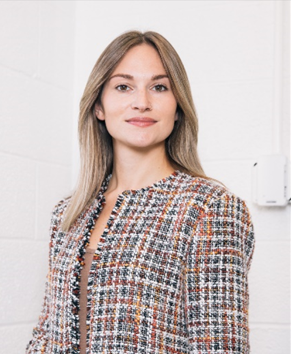
Nicolette Bugher is a trainee at the Massachusetts Institute of Technology (MIT) SRP Center who is mentored by Desiree Plata.
What is the focus of your research at the MIT SRP Center?
My research focuses on finding and identifying toxic chemicals in the environment. Specifically, I study N-nitrosodimethylamine (NDMA), which is an industrial chemical and disinfection byproduct that has been found in the groundwater of Wilmington, Massachusetts, where the Olin Superfund site is located.
How did you become interested in this work?
I have always been interested in studying water. As an undergraduate, I began academic research on domestic well water quality in vulnerable areas, and I found contaminants that suggested a lot of human influence on our drinking water sources. Since then, I have sustained an interest in filling in the often decades-long gap between discovery of a chemical contaminant and regulation in drinking water.
Tell us about the poster award you received at the latest SRP Annual Meeting and what it meant to you.
Winning the poster award was a humbling and fulfilling experience. It was my first opportunity to attend the SRP Annual Meeting and receive feedback on my project. Speaking to the other SRP researchers and community members underscored the common goals of the SRP research centers and was a reminder of the impact my work can have.
What factors have contributed most to your growth as a researcher throughout your time as an SRP trainee?
The strong mentorship within our center has been pivotal to my advancement as an SRP trainee. Our directors, Bevin Engelward and Desiree Plata, along with Clara Chow and the many other principal investigators and senior trainees in our group, foster a welcoming environment that encourages collaboration and strengthens our community. Members of the MIT SRP team have specifically supported my research interests and facilitated my success within the program.
What is one piece of advice that you have for other SRP trainees?
At the start of my traineeship, Bein Engelward, emphasized that we should take advantage of our unique opportunities to collaborate across disciplines. At the time, I never thought I would create opportunities to work with researchers outside of my discipline, but over time collaborations came naturally out of conversations at SRP events. Utilize the opportunities for collaboration that SRP facilitates - it's easier than you think.
Breandon Taylor, University of Louisville
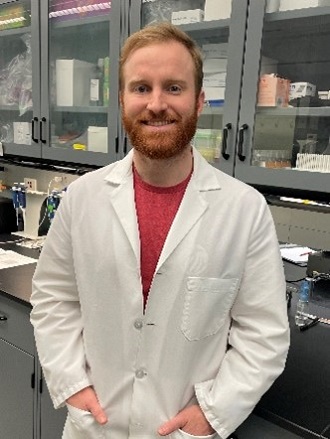
Breandon Taylor is a trainee at the University of Louisville SRP Center who is mentored by Sanjay Srivastava.
What is the focus of your research at the University of Louisville SRP Center?
My studies are aimed to examine the cellular and molecular mechanisms by which volatile organic compound (VOC) exposure regulates vascular inflammation, especially in atherosclerosis, the leading cause of most cardiovascular disease and stroke.
How did you become interested in this work?
I’ve always had a keen interest in the natural sciences and how the world around us shapes human health. We are exposed to many chemicals throughout our daily lives, and unfortunately many impoverished communities are disproportionately subject to this. I really became interested in this work when I realized that my contribution through research could provide a positive impact to the wellbeing of my community, as well as others on a larger scale.
Tell us about the poster award you received at the latest SRP Annual Meeting and what it meant to you.
Receiving the award for best biomedical research poster presentation at the 2023 SRP Annual Meeting was a very humbling and rewarding experience. It is particularly satisfying and motivating to learn that leaders in the field appreciated my research.
What factors have contributed most to your growth as a researcher throughout your time as an SRP trainee?
I’ve really appreciated the intellectual and material resources, especially the cutting-edge technologies, available at the University of Louisville Superfund Research Center for my project. Additionally, my K.C. Donnelly externship experience at Louisiana State University (LSU) accelerated my independence and growth as a developing researcher.
What is one piece of advice that you have for other SRP trainees?
Challenge yourself and be enterprising. Great things can come from your willingness to bounce ideas off of your mentors and peers.
Rayna Vue, University of New Mexico

Rayna Vue is a trainee at the UNM SRP Center who is mentored by Debra MacKenzie.
What is the focus of your research at the UNM SRP Center?
There are over 500 abandoned uranium mines across the Navajo Nation, exposing communities to toxic metals. My focus is assessing the distributions of metal concentrations in Navajo children. So far, we have analyzed metal concentrations in children from birth to five years of age. We are now collecting and analyzing samples at later timepoints to further assess outcomes of long-term exposure to environmental metals.
How did you become interested in this work?
As an undergraduate at UNM, I participated in a research program that sparked my interest to work on a research team. I knew I was interested in doing community-based research in hopes of improving health within local communities. As I am not native to New Mexico, being able to learn about Navajo Nation and conduct research to help Indigenous populations was something I became very interested in and felt would be meaningful to pursue.
Tell us about the poster award you received at the latest SRP Annual Meeting and what it meant to you.
The 2023 SRP Annual Meeting poster award was my first scientific recognition, and so it will truly hold a special place in my heart. I have so much more to learn as I am new to the research field, but this award furthered my motivation to keep pursuing community-based research and have a positive impact on the health of local populations.
What factors have contributed most to your growth as a researcher throughout your time as an SRP trainee?
Being able to collaborate with leaders within the Navajo community has been a humbling and enlightening experience. I think working with Indigenous communities has given me the unique chance of developing cultural humility and realizing the importance of community-researcher engagement.
What is one piece of advice that you have for other SRP trainees?
Present your research at any chance you get! It’s good practice and a great way to meet new researchers. Getting questions and feedback can allow for better poster building in the future as well.
Christian Rude, Oregon State University
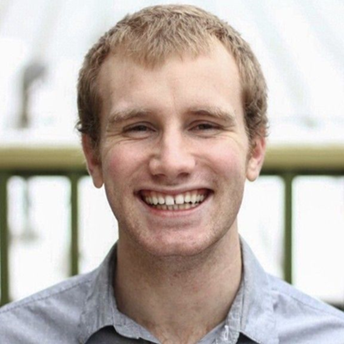
Christian Rude, a trainee at the OSU SRP Center, is mentored by Robyn Tanguay, and his research is focused on polycyclic aromatic hydrocardons (PAHs).
What is the focus of your research at the OSU SRP Center?
My work at OSU is centered around PAHs. PAHs occur in fossil fuels and are formed naturally during combustion. One of my current projects uses new technologies to measure RNA in zebrafish exposed to PAHs, and another is building a model to predict the dose of PAH that enters the zebrafish from their water.
How did you become interested in this work?
I'm a bit of a boundary pusher. If someone tells me not to do something because it is dangerous, I want to know how dangerous it is, because that boundary might be worth adjusting. I’m interested in toxicology because it helps us understand the dangers of various chemicals so we can make informed decisions about them.
Tell us about your recent publication and why it is important to your field.
Contaminant mixtures are tricky, and we're still building our knowledge of how to approach them. Our recent publication addresses this by using passive sampling devices and experiments with zebrafish to characterize hazards of environmental mixtures from the Portland Harbor Superfund Site. Our analysis suggested toxic modes of action we wouldn't have expected, or even known to look for, given our knowledge of the chemicals in the area.
What factors have contributed most to your growth as a researcher throughout your time as an SRP trainee?
It's all come down to the people around me. My mentor, Robyn Tanguay, is excellent. I also receive a lot of support from other researchers in the program, fellow trainees, and my spiritual communities at my church and the Graduate Christian Fellowship.
What is one piece of advice that you have for other SRP trainees?
Make good friends and get good at failing. We all need to know and be known and to love and be loved. If we do all the best science in the world but are completely alone, it's still a bummer. As for failing, being a trainee is about learning and growing. The best way to learn and grow, whether we like it or not, is to fail and learn from those failures.
Irene Martinez-Morata, Columbia University
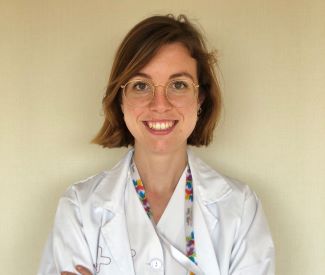
Irene Martinez-Morata is a trainee at the Columbia University Northern Plains (CUNP) SRP Center who is mentored by Center Director Ana Navas-Acien.
What is the focus of your research at the Columbia University SRP Center?
My research focuses on identifying and unraveling the impacts of metal exposure on the cardiometabolic health of indigenous communities. I collaborate closely with the Strong Heart Study and the multidisciplinary team at CUNP SRP. With the support of an SRP KC Donnelly Externship award, I am also collaborating with the team at the UNM SRP Center and getting involved in a community-based nutritional intervention to reduce toxicity in communities exposed to high levels of uranium and other toxic metals.
How did you become interested in this work?
Through my fieldwork experiences, I have had the opportunity to work with different communities severely affected by environmental contaminants across different countries. In these experiences I have understood that several environmental exposures are modifiable and that tackling them requires interdisciplinary science and creativity. Therefore, it was the emphasis on developing practical solutions from a multidisciplinary perspective that motivated me to get involved as a trainee in the CUNP SRP.
Tell us about a recent publication and what it means to you.
In this article, published in Nature Communications and featured in February 2023 as an extramural NIEHS paper of the month, we identified and quantified differences in health outcomes from exposure to drinking water contaminants at the community level. To me, developing this work was an incredible learning experience and a vivid example of how multidisciplinary science and teamwork are needed to address environmental health concerns and support communities.
What factors have contributed most to your growth as a researcher throughout your time as an SRP trainee?
Mentorship and collaboration are two factors that have had a pivotal role in nurturing my growth as an SRP trainee. When I made the transition to Columbia University, it meant relocating from my home country, immersing myself in a foreign language, and adapting to a new culture both personally and professionally. Through this process, I'm deeply grateful for the invaluable guidance and support from my mentors and all the collaboration opportunities I have encountered and continue to engage in.
What is one piece of advice that you have for other SRP trainees?
One piece of advice I would give to other SRP trainees is to be creative and don’t be afraid of collaborating with others, both within and outside your field. In my experience, creativity and collaboration have enhanced my research experience and broadened my perspective, and being part of the SRP is an exceptional opportunity to seek out multidisciplinary collaborations and learn from others.
Max Aung, Northeastern University
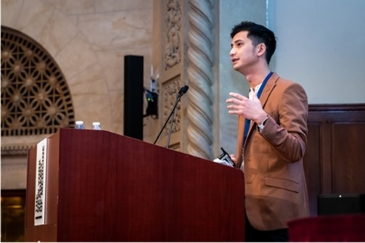
Max Aung is a former trainee from the Northeastern University SRP Center. He is now a faculty member at the University of Southern California (USC).
What was the focus of your research at the Northeastern University SRP Center?
My research used biomarkers of lipid metabolism to find potential links between environmental contaminant exposures and adverse pregnancy outcomes, like preterm birth and impaired fetal development. As faculty at USC, I investigate the link between these biomarkers and exposures to early indicators of adverse neurodevelopment.
How did you become interested in this work?
I became interested in the developmental origins of health and disease because of the potential for biomarkers to help advance risk assessment and improve early detections of adverse child neurodevelopment.
Tell us about an award you received and what it meant to you.
I received the Harvard JPB Environmental Health Fellowship to pursue environmental health research. It is a major investment to strengthen my capacity and leadership skills to advance social and environmental health research and inform potential policy solutions and interventions. A unique component of this fellowship is the creative space it nurtures for academic scholars to collaborate with federal agency scholars to tackle challenges in order to improve environmental and public health.
What factors contributed most to your growth as a researcher throughout your time as an SRP trainee?
SRP is a stellar program that allows interaction with interdisciplinary scholars through SRP training opportunities, which has been a major factor to help me develop innovative research ideas to pursue translational environmental health research, spanning from basic science to epidemiology and community science translation.
What is one piece of advice that you have for other SRP trainees?
Interact with researchers outside of your own discipline and try to develop collaborations and mentors outside of your home institution! This can really help diversify your research portfolio and strengthen your ability to improve health outcomes through science translation.
How did your time as a trainee at the Northeastern SRP Center inform your current work?
My time as a trainee has helped me build the necessary interdisciplinary research skills to pursue SRP relevant research at USC. With recent funding from USC President’s Sustainability Research Award, I am co-leading a project to strengthen research infrastructure to develop a proposal for a future SRP Center at USC with a mission to investigate the biological mechanisms of PFAS exposure and engage communities in science translation and education. My leadership in these efforts reflects the strong training pipeline of the NIEHS SRP, which I aim to contribute to as a mentor for future trainees.
Hannah Starnes, North Carolina State University
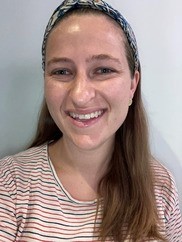
Hannah Starnes is a trainee at the NCSU SRP Center, mentored by Scott Belcher.
What is the focus of your research at the NCSU SRP Center?
I study whether different human and animal proteins can bind to PFAS, and how strong those binding interactions are. More specifically, my research aims to uncover how the same protein in different species might bind to PFAS and to develop machine learning approaches that can predict protein interactions for thousands of untested PFAS compounds.
How did you become interested in this work?I became interested in lab work and human health research through a biomedical sciences program at my high school, but I had always been passionate about environmental health and extreme weather protections. I pursued research in both neuroscience and environmental studies in my undergraduate career, and eventually discovered toxicology. This led to my research in how chemicals impact the brain, and in the distribution and uptake of PFAS into tissue.
Tell us about a recent award and what it means to you.
Recently, I was awarded the NCSU Toxicology Founder's Fellowship, which granted funding for my travel to Woods Hole, Massachusetts, to participate as a teaching assistant in the Marine Biological Laboratory Endocrine Disrupting Chemicals (EDCs): Hazards and Opportunities course. This award allowed me to improve my science communication and instruction of laboratory methods, attend courses taught by faculty studying EDCs, and gain hands-on experience in new techniques related to endocrine toxicology.
What factors have contributed most to your growth as a researcher throughout your time as an SRP trainee?
Collaboration with a diverse group of inspiring scientists and mentors has contributed the most to my development as a researcher. I have been so lucky to work with and receive training from many talented people, spanning the fields of toxicology, analytical chemistry, machine learning, endocrinology, epidemiology, and zoology. All of these scientists have unique perspectives that have broadened my thinking and deepened my motivation to do impactful work.
What is one piece of advice that you have for other SRP trainees?
My advice to other SRP trainees would be to challenge yourself to step out of your comfort zone — try working on projects that are out of your wheelhouse or seek advice from people with different expertise. You will learn a lot and may end up loving something totally new.
Matt Dunn, University of Rhode Island

Matt Dunn is a trainee at the URI SRP Center mentored by Center Director, Rainer Lohmann.
What is the focus of your research at the URI SRP Center?
My research focuses on developing passive samplers, which are affordable and reliable tools used for measuring PFAS in the environment. I use modeling to better understand how the samplers take up PFAS across time and environmental conditions like flow, salinity, or temperature.
How did you become interested in this work?
I knew I wanted to focus on environmental chemistry and oceanography, and this was a great opportunity to enter a new field of study compared to my undergraduate degree. From there, I was able to apply these samplers to answer coastal chemistry questions, such as researching the sources that influence PFAS flow from rivers to oceans.
Tell us about a recent publication and why it is important to your field.
My colleagues and I recently published a paper describing a new tube design for PFAS sampling. While the paper covers a technical subject, it’s a simple approach to answer an important question: how do we measure PFAS in water over time? To me, the importance of this publication is that it looks at the past decades of passive sampler research and points out what we got right and what we still need to work on while displaying that this new tube design can be helpful to our PFAS monitoring goals.
What is one piece of advice that you have for other SRP trainees?
Graduate school and research are draining. Take a break, find a hobby, and focus on developing friendships, not just academic collaborations, with your co-workers or classmates. You will be a much more successful scientist if you’re having fun.
Kelly Rivenbark, Texas A&M University
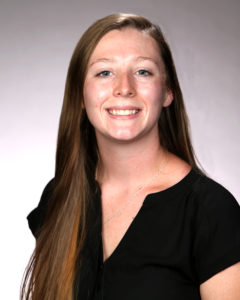
Kelly Rivenbark is a trainee at the Texas A&M University (TAMU) SRP Center where she is mentored by Timothy Phillips.
What is the focus of your research at the Texas A&M University SRP Center?
I research the development and assessment of clay and carbon-based sorbent materials for environmental remediation. I study how we can use green engineering to remove hazardous chemicals — like benzene — from water, soil, and air.
How did you become interested in this work?
I grew up on a farm in rural North Carolina, so I spent a lot of time outside as a child and was always interested in the connection between environmental quality and human health. After earning my bachelor’s degree in chemistry, I wanted to use my knowledge and skills to make products that promote human and environmental health.
Tell us about a recent award and what it means to you.
I am honored to have received the Best Graduate Student Abstract Award at the Society of Toxicology annual meeting from the Sustainable Chemicals Through Contemporary Toxicology specialty section. It was great to see the reception of my work and connect with other students and experts in the field.
What factors have contributed most to your growth as a researcher throughout your time as an SRP trainee?
Mentorship from my PI, Timothy Phillips, and from others from TAMU SRP has been essential in my growth as a researcher. Insightful webinars, hands-on disaster response training from the TAMU SRP Center, and attending the SRP annual meeting last December have also contributed to my growth.
What is one piece of advice that you have for other SRP trainees?
Attend the annual SRP annual meeting and other conferences! These events are a great way to present your research, get valuable feedback, and connect with lots of different individuals.
Amanda Bullert, University of Iowa
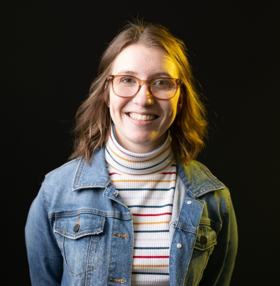
Amanda Bullert is a trainee at the University of Iowa SRP Center mentored by Hans-Joachim Lehmler.
What is the focus of your research at the University of Iowa SRP Center?
My research focuses on how polychlorinated biphenyls (PCBs) — manmade, persistent organic pollutants — affect the brains of children. I study how children can be exposed to PCBs in their school buildings and if there are any neurodevelopmental effects associated with exposure. Recent studies have shown that older school buildings may have a much higher concentration of PCBs in indoor air than in outdoor air.
How did you become interested in this work?
My upbringing on a farm drove my curiosity about the health effects of exposure to agricultural and industrial products, and I saw firsthand how pesticides and fertilizers impacted my grandparents’ health. I felt a disconnect between farmers and the scientists trying to communicate their findings about the negative health effects associated with chemicals used on farms, so my research excites me because it provides a path to bridge that gap. I believe that good science communication can really make a difference in the lives of farmers, patients, environmentalists, and others.
Tell us about a recent award and what it means to you.
It is such an honor to have received the University of Iowa’s Dare to Discover Award and see the impact of the work I do every day. I appreciate every opportunity to share and educate the public on the health risks of PCB exposure.
How have collaborations and interdisciplinary science been important to your work?
Due to the numerous opportunities for collaboration within the Iowa SRP — with lead scientists and other students — my research is truly interdisciplinary and involves bioinformatics, toxicology, and analytical chemistry approaches. As a graduate student, I appreciate all the opportunities that Iowa SRP has presented me to become a more well-rounded scientist.
What is one piece of advice that you have for other SRP trainees?
Use every opportunity to present and share your research! Each SRP center has experts in your field of study and in other areas, both of which can provide feedback to make your research more accessible to a wide range of disciplines.
Rebecca Burton, University of Minnesota

Rebecca Burton is a trainee mentored by Susan Arnold at the University of Minnesota as part of the R25 Occupational Health and Safety Training Education Program.
What is the focus of your research at the University of Minnesota SRP Center?
I characterize the occupational exposures associated with additive manufacturing — the industrial production name for 3D printing. I conduct field research to identify air and skin exposure hazards during printing processes to understand which tasks and materials might be most concerning.
How did you become interested in this work?
I worked as an industrial hygienist for a research and development facility, and the researchers I supported were very interested in additive manufacturing. When asked about what controls they were planning to implement in the labs, they were surprised to think that they might need any. I went to the manufacturers, trade journals, and scientific literature to learn about the hazards and risks posed by the technology and hardly found any, which seemed like an important gap to address.
How will your research advance occupational health?
I hope to provide a better understanding of how these additive manufacturing technologies work, the hazards that workers face, the most urgent tasks and materials to address, and important considerations for planning future studies. This work will be an important contribution not just to the scientific literature, but also for employers who want to implement these technologies and for manufacturers who are making and selling the technology to customers.
What factors have contributed most to your growth as a researcher throughout your time as an SRP trainee?
My mentors have been incredibly supportive, allowing me to proceed at my own pace and helping me adapt the program to a structure I could manage around my other commitments. If a full-time, four-year program was the only possibility, I would not have been able to begin this research, which I hope will be valuable to the research and industrial communities. The program has also provided a lot of opportunities to be active in the larger industrial hygiene community, present my work publicly, and build connections with other experts who can help to advance the research.
What is one piece of advice that you have for other SRP trainees?
The broader research community is so generous and welcoming — I reached out to a researcher whose work I admired because it is interesting and much needed in my field, and now he's on my committee. My advice is to not hesitate to reach out for help where you need it. Most of the people I've encountered have been extremely supportive and helpful.
Srishti Gupta, Arizona State University

This month we spoke with Srishti Gupta, a doctoral student at Arizona State University mentored by Christopher Muhich of the Harvard University SRP Center.
What is the focus of your research?
Selenium and arsenic, pollutants commonly present at Superfund sites, are toxic to the health of humans and aquatic organisms, even at low concentrations. I study strategies to remove these toxic pollutants from drinking water using metal oxide materials.
Tell us about a recent award and what it means to you.
My recent publication focuses on understanding the fundamental physics behind how aluminum oxide surfaces adsorb selenate, one of the most toxic forms of selenium. We overturned longstanding misconceptions about the key controlling mechanism of selenate adsorption, and found that the hydrogen bonding network formed when the material is in water controls selenate adsorption, rather than direct interactions between selenate and the adsorbent surface. These results suggest that modifications to adsorbent surfaces that increase hydrogen bonding capabilities may increase the removal of toxic contaminants from drinking water.
You recently received the Outstanding Mentor Award from the Arizona State University Graduate and Professional Student Association. How has mentorship been important to you?
By mentoring students from various backgrounds, I hope to create a supportive environment to encourage them to continue their education and join science and technology-related fields. I want the new generation of students to feel a sense of belonging to the scientific community. Being a mentor has allowed me to contribute to building a collaborative scientific community that can work synergistically on solving scientific problems.
What is one piece of advice that you have for other SRP trainees?
I strongly encourage all trainees to discuss their research with their peers as much as possible, sharing successes and failures alike. Discussing my research problems with my mentor and collaborators resulted in several of the most important discoveries of my academic journey.
Taylor Busch, University of New Mexico
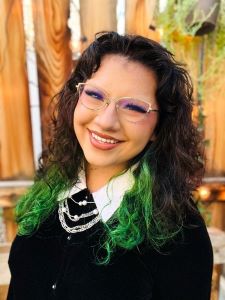
Taylor Busch is a trainee at the UNM SRP Center eaxmining how fungi can be used to clean up heavy metal contamination.
What is the focus of your research at the UNM SRP Center?
I study how fungi can be used as a natural method to remove arsenic from the environment. I apply engineering, health sciences, biology, and analytical chemistry approaches to understand how natural processes can be used to clean up abandoned heavy metal mines.
How did you become interested in this work?
As a member of the Navajo Nation, I decided to pursue engineering to help find solutions to the environmental health outcomes that communities face. When I transferred to UNM from community college, I learned about Jose Cerrato’s work in research and community engagement with Tribal communities that are impacted by mine waste, which sparked my interest in continuing to protect human and environmental health as a graduate student.
What factors have contributed most to your growth as a researcher throughout your time as an SRP trainee?
My phenomenal mentors, Jose Cerrato and Anjali Mulchandani, as well as the enthusiasm and collaborative culture at the UNM SRP Center, have been instrumental in my growth as a researcher. Participating in the monthly UNM SRP meetings, presenting at community engagement and research translation webinars, and traveling to the SRP Annual Meeting have been opportunities for me to network with a diverse community of scientists across SRP.
What is one piece of advice that you have for other SRP trainees?
Participate in as many events as you can, as the SRP network is eager to learn about your work and collaborate with you. Remember that research is not linear, but you will make progress and learn so much along the way.
Avinash Kumar, Louisiana State University

Avinash Kumar is a postdoctoral trainee at the Louisiana State University (LSU) SRP Center mentored by Stephania Cormier.
What is the focus of your research at the LSU SRP Center?
We study how environmentally persistent free radicals (EPFRs) are formed, how to destroy them, and how inhaling them impacts the lungs and heart, with the ultimate goal of protecting communities and the environment. EPFRs are contaminants formed by burning hazardous waste and are not easily removed from the environment.
How did you become interested in this work?
Growing up and spending more than 20 years of my life in Sonebhadra, India, a rural area with a surface coal mine, I witnessed the environmental and health damages of coal burning first-hand. This motivated me to pursue a Ph.D. in Environmental Toxicology and continue my current training in Dr. Cormier’s lab, where I also interact with the community in Colfax, Louisiana, whose air quality is influenced by an open-burn hazardous waste treatment facility.
Tell us about a recent award and what it means to you.
Receiving the K.C. Donnelly Externship Award from SRP, as well as the Dr. Dharm Singh Postdoctoral Fellow Best Abstract Award from the Society of Toxicology, means a lot to my research. These prestigious awards have provided me with recognition among peers and motivated me to further my knowledge and contributions to the field of environmental toxicology.
What factors have contributed most to your growth as a researcher throughout your time as an SRP trainee?
In addition to a self-driven attitude and passion for my research, the extraordinary mentorship of my supervisor, Dr. Cormier, has been essential to my growth as an SRP trainee. The highly collaborative environment at the LSU SRP Center, weekly participation in SRP seminars, involvement in environmental health literacy programs, and networking with other scientists working on interdisciplinary projects have all been major contributing factors to my personal growth as a researcher.
What is one piece of advice that you have for other SRP trainees?
Network and collaborate with scientists outside of your area of expertise. Stay motivated — patience is key and will help you accomplish each goal step by step.
Asta Habtemichael, University of Rhode Island
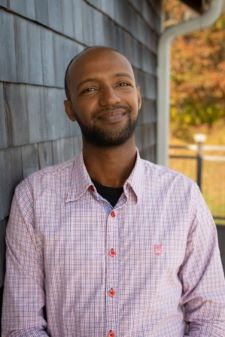
Asta Habtemichael is a postdoctoral trainee at the University of Rhode Island SRP Center studying the impacts of PFAS in marine environments.
What is the focus of your research at the URI SRP Center?
My research focuses on bioavailability, bioaccumulation, and biomagnification of PFAS in marine food webs, meaning how the concentration of PFAS within organisms increases over time and up the food chain. In the lab, I conduct experiments to study PFAS in different plankton species.
How did you become interested in this work?
I always believed that science should improve the lives of local communities. During my graduate studies, I learned how individuals who depend on fish as a primary food source can be exposed to PFAS through fish consumption. I am excited to work on this project that contributes to improving food and health security of local communities affected by environmental pollution.
You were awarded the 2022 Switzer Fellowship — what does that mean to you?
In addition to providing funding for my research, the fellowship serves as an opportunity for collaboration with other members of the Switzer Network, as well as professional development with national and international environmental leaders. The ability to diversify my pool of mentors and peer collaborators will tremendously enhance my preparation for a future environmental health career, where I hope to bring integrated approaches to address chemical pollution issues such as PFAS contamination.
What factors have contributed most to your growth as a researcher throughout your time as an SRP trainee?
The well-rounded training and collaborative environments fostered by SRP programs have been a major factor in my growth as a researcher. The training core at the URI SRP Center provides a platform with various activities and resources that promote interdisciplinary, collaborative research as well as professional development opportunities that instill leadership qualities in trainees. Additionally, working directly with local communities has enriched my science communication and community engagement skills.
What is one piece of advice that you have for other SRP trainees?
Take advantage of the opportunities and resources provided. With all the expertise across SRP centers, it is crucial to diversify your mentor pool and seek out opportunities for more collaborative work. Building relationships with communities and working together on mutually beneficial research projects facilitates comprehensive solutions for different environmental issues.
Lauren Eaves, University of North Carolina at Chapel Hill
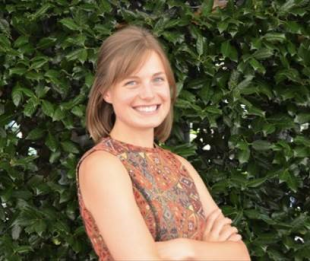
Lauren Eaves is a trainee at the University of North Carolina at Chapel Hill SRP Center studying how environmental exposures impact pregnancy outcomes.
What is the focus of your research?
I research how environmental exposures impact pregnancy outcomes, with a focus on changes in gene expression in the placenta. I combine environmental epidemiology, reproductive toxicology, and geospatial mapping approaches to document toxic metals in well water in North Carolina and evaluate their association — both individually and in mixtures — with preterm birth risk.
How did you become interested in this work?
I took a class during my undergraduate studies led by Rebecca Fry, Director of UNC’s SRP Program and my current PI, which exposed me to the ways that science can inform public health policy and programming. Her research struck me as the perfect combination of the biology that I loved and the social impact that I knew would motivate me.
Tell us about your recent publication and why it's important to environmental health.
Our publication analyzes toxic metals in North Carolina well water using the NCWELL database, a comprehensive dataset of over 100,000 well water tests collected throughout the state over 20 years. We found that thousands of wells across North Carolina exceed U.S. Environmental Protection Agency (EPA) standards for inorganic arsenic, lead, and manganese, among other metals of concern. This paper calls attention to the major public health challenge posed by well water-based metal contamination and also serves as a resource for researchers and communities.
What factors have contributed most to your growth as a researcher throughout your time as an SRP trainee?
My growth as a researcher has been amplified by exposure to interdisciplinary science. I have collaborated with geologists, toxicologists, and membrane engineers, who all conduct science very different from my own and have expanded my idea of how science can contribute to improving public health.
What is one piece of advice that you have for other SRP trainees?
Break your dissertation work into smaller chunks and tackle it step by step. It’s also important to have passions and interests that take your mind off research — for me, it’s being a doula and lactation consultant, and going to dance class!
Roheeni Saxena, Columbia University

Roheeni Saxena is a postdoctoral trainee at the Columbia University SRP Center studying the effects of environmental exposures on brain development.
What is the focus of your research?
I combine methods from neuroscience and epidemiology to investigate the effects of environmental exposures on child and adolescent brain function. I identify biomarkers — molecules in the body that indicate disease or chemical exposures — to examine the effects of metals, pesticides, and social determinants of health, with the goal of improving neurological outcomes for populations that have been marginalized. This is important to public health because cognitive function influences every aspect of an individual's life, including their education, interpersonal relationships, and professional achievements.
Tell us about how mentorship and collaborations have been important to you.
Through my work with the Columbia SRP Center, I have been fortunate to meet wonderful mentors, including my pre-doctoral mentors, Mary Gamble, Joseph Graziano, Ana Navas-Acien, and others, and my postdoctoral fellowship mentors, Diane Re and Marianthi-Anna Kioumourtzoglou. The collaborative environment of the Columbia SRP allowed me to hone my interdisciplinary research focus on the cognitive effects of environmental exposures as measured by biomarkers.
What factors have contributed most to your growth as a researcher throughout your time as an SRP trainee?
The team-science culture fostered by the Columbia SRP Center helped me learn how to integrate concepts from different disciplines into my work. I appreciate the rare opportunity to develop fluency in both toxicology and epidemiology
What is one piece of advice that you have for other SRP trainees?
Public health research is a team sport, requiring many diverse specialists as the field moves forward to investigate more complex health determinants and outcomes. I recommend that trainees fully embrace the SRP's collaborative and interdisciplinary spirit to develop their own team-science skills!
Bridget Belcher, University of California Berkeley
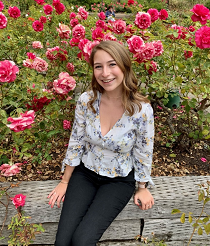
Bridget Belcher is a trainee at the UC Berkeley SRP Center. Belcher is a doctoral student studying the impact of Superfund chemicals on biological proteins.
What is the focus of your research at the UC Berkeley SRP Center?
I have a long-standing interest in understanding the mechanisms of chemicals that have biological impacts. My research uses probes — small molecules used to study biological systems — to target interactions between chemicals and proteins involved in the metabolism of fatty acid molecules. Certain interactions could lead to fat buildup in tissues and subsequent health problems.
Tell us about how mentorship and collaborations have been important to you.
The principal investigators (PIs) at the UC Berkeley SRP Center, as well as my peers, have provided a synergistic environment to learn about chemical biology and environmental toxicology. My PI, Daniel Nomura, has provided a lot of insight and mentorship, making it easier for me to learn.
What factors have contributed most to your growth as a researcher throughout your time as an SRP trainee?
The collaborative environment provided by the SRP trainee network has been extremely beneficial. I love learning about what the other trainees are doing at Berkeley!
What is one piece of advice that you have for other SRP trainees?
Take advantage of the knowledge from people around you! Hearing more experienced trainees and PIs talk about their research is always a great learning opportunity and can help you come up with new ideas for your own projects.
Rollie Mills, University of Kentucky
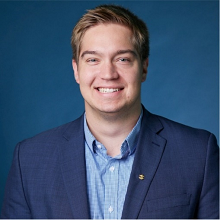
Rollie Mills is a graduate student mentored by Dibakar Bhattacharyya (DB) at the University of Kentucky (UK) SRP Center.
What is the focus of your research at the UK SRP Center?
My research focuses on the development of novel membrane materials to capture and degrade harmful pollutants to clean up water and air.
How did you become interested in this work?
I have been interested in water since I was young. Living in a remote village in Greece, where resources like fresh water were not always guaranteed, taught me the importance of having clean and drinkable water sources. As an undergraduate student at UK, I met my mentor DB, and his passion for helping others further drew me into environmental remediation research.
Tell us about your recent publication on antiviral membranes to deactivate SARS-CoV-2.
We worked with other departments at UK to coat our commercial membranes with a non-toxic enzyme, which neutralized the spike protein of SARS-CoV-2 — the primary protein in charge of infecting host cells with COVID-19 — within seconds. This research shows that there are new avenues to pursue for personal protective equipment and masks. Moving such technology forward can significantly decrease the rate of viral infection and economic damage that harms our society during pandemics.
Tell us about an award that meant a lot to you.
I won first place in the poster competition at the 2022 North American Membrane Society conference. This showed me how far I have come as a researcher. It feels like just yesterday that I was standing in the audience trying to grasp at any information I could comprehend. Now, at this conference, I was able to talk with professors I have looked up to for years, and I am looking forward to where my research will take me.
What is one piece of advice that you have for other SRP trainees?
Surround yourself with fantastic peers. Having motivated and inspiring researchers around me is what pushed me to become the scientist I am today. I have also learned a lot from the undergraduate students in our lab, including Ronald Vogler, Jacob Concolino, and Matthew Bernard. Also, keep an open mind about your mentors — they can come from anywhere! Along with DB, one of the most influential mentors I have had is Kevin Baldridge, a former postdoctoral researcher in my lab.
Chuqi Guo, Louisiana State University
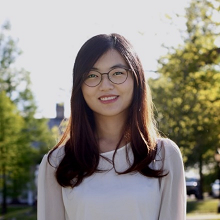
Chuqi Guo is a trainee at the Louisiana State University (LSU) SRP Center. Guo is a postdoctoral researcher mentored by Jennifer Richmond-Bryant studying community exposure to environmentally persistent free radicals (EPFRs), which are long-lived toxic compounds formed from burning hazardous waste.
What is the focus of your research at the LSU SRP Center?
I work on a community-engaged project in Colfax, Louisiana, which hosts a commercial open burn and open detonation facility that uses thermal treatment to destroy hazardous wastes. We study community exposure by measuring particulate matter in the ambient air and analyzing the samples for EPFRs, metals, dioxins, and other pollutants.
How did you become interested in this work?
The residents of Colfax live next to the only commercially operating open burn pit in the U.S., placing them at an elevated risk for adverse health effects. As part of this study, I hope that we will provide the community with information about their exposures and promote community empowerment and engagement to protect their health.
Tell us about a recent publication and why it is important to you and your field.
I recently published a review paper regarding extracting EPFRs from samples for analysis. By comparing methods among EPFR studies, we hope to provide some information to assist with the selection of EPFR extraction methods and guide future EPFR studies. Understanding the best methods can also help us provide high-quality data for the community
During your time as an SRP trainee, what factors have contributed most to your growth as a researcher?
Communication is a critical factor in my growth as a researcher. Through effective communication with my mentor, I have collaborated on designing and revising our study plan as needed. Effective communication with community members and other researchers also brings new perspectives to the study.
What is one piece of advice that you have for other SRP trainees?
Be confident and keep learning. It is challenging to grow from being a student to an independent researcher. It is easy to lose self-confidence, especially when facing a new challenge. Believe in your capability and expertise — and keep learning from everyone around you — and you will achieve your goals.
Banrida Wahlang, University of Louisville

Banrida Wahlang is a former trainee at the University of Louisville (UofL) SRP Center. Wahlang is now a junior research faculty member at the UofL School of Medicine
What was the purpose of your SRP research working under the mentorship of Matthew Cave?
The goal of my SRP research project was to understand how contaminants in air can affect our health, and how these health effects — such as cardiovascular disease and diabetes — can differ between sexes. Specifically, our research center is studying volatile organic compounds (VOCs), which can originate from industrial processes and household products, influencing both indoor and outdoor air quality.
How did you become interested in this work?
Growing up in Shillong, India, a town at the foothills of the Himalayas, I witnessed how environmental health problems surfaced with ongoing global industrialization. However, conducting studies to assess the health effects of air and water pollution in the area is challenging due to a lack of research infrastructure. My work at the UofL SRP Center allowed me to work with communities in Louisville, Kentucky, that are facing similar environmental health problems. I hope that my training will enable me to be a global leader in environmental health and give back in some way to my community.
Tell us about a recent award you received.
Last year I received a research voucher by the NIEHS Center for Integrative Environmental Health Sciences. The award provided me with the necessary funds to continue my research related to sex-dependent effects of polychlorinated biphenyls (PCBs) on the gut microbiome. As an SRP trainee, I had the opportunity to develop not only my leadership and communication skills, but also my own independent research track leading up to receiving this award.
You were the first author on the paper “Associations Between Residential Exposure to Volatile Organic Compounds and Liver Injury Markers.” How does this study relate to the work conducted in your lab?
For this publication, I worked with other UofL SRP Center researchers. We wanted to examine the relationship between VOCs and markers of liver injury in Louisville community residents. I helped to recruit participants and collect data, conducted laboratory work to measure specific disease biomarkers, worked with biostatisticians to analyze data, and collaborated on the manuscript. It was a great experience to be able to participate in every aspect of the study — from start to finish.
What is one piece of advice that you want to share with other SRP trainees?
Be patient, keep going — especially when things get tough — and never stop learning! This world we live in is so complex, and there is always something new to learn. Most importantly, if you build your foundation with honesty, hard work, and integrity, you can weather any kind of storm.
Nnamdi Osakwe, North Carolina State University

Nnamdi Osakwe is a trainee at the North Carolina State University (NCSU) SRP Center. Osakwe is mentored by David Reif, who leads the center’s Data Management and Analysis Core (DMAC).
Tell us about your work with the NCSU SRP Center.
The purpose of my research is to understand the relationship between environmental exposures and human health outcomes in populations exposed to poor environmental quality. By using bioinformatic techniques —collecting, storing, and analyzing biological data — I hope to provide affected communities and policymakers with data on environmental quality and its effects on human health.
How did you become interested in this work?
As an undergraduate at North Carolina Central University (NCCU), I had the opportunity to work under the guidance of ClarLynda Williams-DeVane to use bioinformatics to study the health outcomes surrounding diseases like asthma, diabetes, and obesity. Recognizing the knowledge gaps in health outcomes research and the opportunity for collaboration among diverse scientific fields to address these problems fueled me to pursue this area further.
Tell us about a project that excites you.
I am collaborating on a project to study the relationship between green spaces and their effects on biological aging, one of the risk factors for many human diseases. I get to combine many of my interests in this project: bioinformatics, environmental health, public health, and differences in health outcomes. I am thankful I can pursue my interests while helping to make positive change for often-ignored communities.
What is one piece of advice that you want to share with other SRP trainees?
Patience is key. There is no doubt that graduate school will test your patience in many ways but learning to persevere and take challenges one step at a time has helped me get through this experience. Although it can seem long and difficult, consistent, and gradual progress will eventually lead you to achieve your goals.
Jamaji Nwanaji-Enwerem, University of California Berkeley
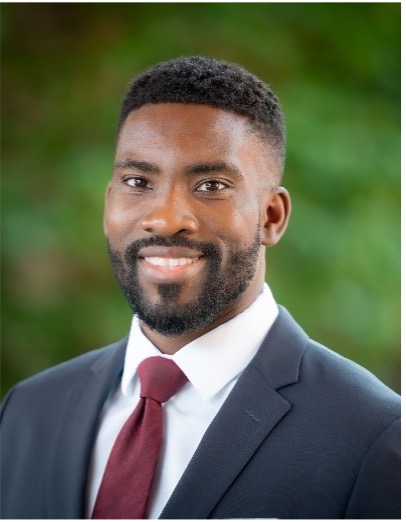
As a UC Berkeley SRP Center trainee, Jamaji Nwanaji-Enwerem studied the relationship between environmental exposures and the development of disease in vulnerable populations, particularly children.
Under the mentorship of UC Berkeley SRP Center researcher Andres Cardenas, Nwanaji-Enwerem combined molecular approaches and studies in human populations to understand how environmental toxins can speed up or slow down biological aging, one of the risk factors for many human diseases.
In one study, the team showed that certain cellular signs of aging were associated with Zika-related microencephaly - a life-threatening condition where a baby's head is significantly smaller than expected. According to Nwanaji-Enwerem, these findings might help inform future research to develop measures that can better predict risk of infant mortality.
In a recent commentary, Nwanaji-Enwerem and colleagues discussed the importance of integrating the exposome - the measure of all the exposures individuals experience over their lifetime - into biological aging research to improve health outcomes. They explained this allows researchers to incorporate social and environmental stressors that can help identify and prevent adverse environmental health outcomes.
Now at Emory University, Nwanaji-Enwerem is an emergency medicine resident doctor at the School of Medicine and an adjunct assistant professor at the School of Public Health.
According to Nwanaji-Enwerem, his daily experiences helping people with health issues is an inspiration for many of his environmental health research projects and community-based efforts, including an initiative to help connect, promote, and fund community-level environmental health projects.
In his free time, Nwanaji-Enwerem enjoys spending time with family and friends, exercising, and visiting art exhibits.
Jessica Beard, Massachusetts Institute of Technology
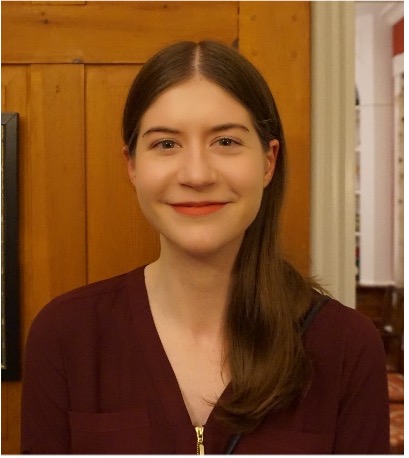
Jessica Beard, a trainee at the Massachusetts Institute of Technology (MIT) SRP Center, studies how the compound nitrosamine spreads through the environment. Classified as a probable human carcinogen, nitrosamines are a group of chemicals formed as a by-product during rubber manufacturing, leather tanning, and pesticide production and have been found at various Superfund sites.
Nitrosamines are commonly detected in air and food, but its presence in water is a particular human health concern because it does not degrade easily in water. Current methods to detect nitrosamines in water require time-consuming sample preparation and the use of expensive laboratory equipment.
Under the mentorship of MIT SRP Center researcher Timothy Swager, Beard is exploring how the light-emitting properties of nitrosamines can be leveraged to detect it in water and sediments. Beard hopes to create a simple portable sensor that can be used for on-site water testing by researchers and community members alike. According to Beard, allowing community members to test their own water will help provide information about more sites faster than relying on traditional lab-based methods.
Beard presented this concept in a poster at the 2020 SRP Annual Meeting and was one of the winners of the meeting's poster competition. She is also first author on a publication describing the structure and reactivity of nitrosamine compounds and how those features may dictate their effects on human health.
Outside of the lab, Jessica enjoys hanging out with her friends, exploring local breweries, and spending time at home with her cat. She is also learning German on a phone app - she has been learning the language for 2,060 days and has not missed a day yet.
Jeliyah Clark, University of North Carolina at Chapel Hill

Jeliyah Clark, a doctoral student at the University of North Carolina at Chapel Hill (UNC) SRP Center, studies the relationship between exposure to environmental contaminants, such as arsenic, and harm to fetal development. Under the mentorship of UNC SRP Center Director Rebecca Fry, she examines how altering prenatal factors, such as maternal diet, may protect developing babies from harmful exposures.
Clark became interested in public health at a young age hearing about her mother's experiences, who worked in an agricultural region and lost her firstborn to childhood cancer. Her mother experiences made Clark determined to study prenatal exposure to chemicals to prevent other families, especially mothers, from experiencing similar tragedies.
In a UNC SRP Center video, Clark described her research using data collected from pregnant women exposed to arsenic-contaminated drinking water to evaluate whether folate protects the developing fetus. B vitamins, like folate, are known to protect against arsenic toxicity in adults, but their effect during pregnancy is less understood. According to Clark, this research could provide evidence that consuming folate during pregnancy protects developing babies from toxic chemicals.
In a recent publication, Clark and the UNC SRP team examined whether a mother's pre-pregnancy weight was associated with the expression of certain genes in the placenta. They found the expression of placenta genes related to growth and nutrient metabolism was altered in male babies whose mothers were underweight pre-pregnancy. Clark explained that these altered genes have previously been associated to low birth weight.
Clark was recently awarded a grant from the Burroughs Wellcome Fund, which recognizes underrepresented graduate students doing biomedical research in North Carolina.
Outside of the lab, Clark finds peace spending time with her loved ones, listening to music, exercising, traveling, reading, cooking, and resting outdoors - especially at the beach.
Moala Bannavti, University of Iowa

Moala Bannavti is a trainee at the University of Iowa (UI) SRP Center studying the characterization and potential remediation pathways of polychlorinated biphenyls (PCBs) in public middle schools. PCBs are a large and complex group of chemicals that often occur in mixtures. These chemicals can be found in old insulation, electrical equipment, and as the byproducts of pigments used in paint colorants and building materials.
Bannavti's research can be summarized in two parts. First, Bannavti and team believe it is possible to understand where PCBs come from in a schoolroom based on the age of the room, the overall air profile, and the visible materials within the room. Second, based on these factors, they believe they could determine whether it is best to remediate by replacing certain materials or tearing down the entire school. A related NIEHS-funded study by Bannavti and team suggests this noninvasive targeted source testing could lead to more cost-effective prioritization of materials remediation in schools as it is less expensive compared to tearing down the entire school and rebuilding. Bannavti explained encouraging low-income school districts to test and remediate PCBs would help improve the health of their students.
Bannavti has helped create presentations, flyers, press releases, and other resources of report-back for UI SRP Center research regarding PCBs in school air to the community. She also converses with local stakeholders, such as district superintendents, before deploying any PCB samplers.
Recently, Bannavti was elected president of the UI Graduate and Professional Student Government, which represents UI's nearly 10,000 graduate and professional students. She is also a member of Alpha Kappa Alpha Sorority, Inc. and is the chaplain of the Tau Psi Omega Chapter in Iowa City. She loves to eat with friends, binge watch reality television, and since November has been an avid weight-lifter.
Check out Bannavti’s UI SRP Center video describing her research, for which she was awarded first place in UI's Three Minute Thesis competition.
Laura Magana, University of California, Berkeley
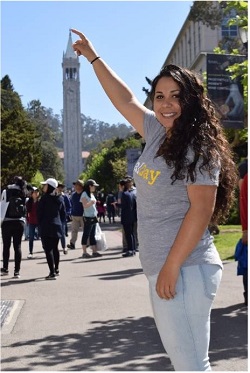
Laura Magana is a trainee at the UC Berkeley SRP Center studying the correlation between formaldehyde exposure and human disease using animal studies and laboratory experiments.
Formaldehyde, an environmental pollutant used in making building materials and households products, is neurotoxic and carcinogenic. Under the mentorship of Center Director Martyn Smith, Magana hopes to better understand the underlying mechanistic pathways by which formaldehyde exposure can harm human health.
Magana received a 2018 K.C. Donnelly Externship Award Supplement to travel to the Oregon State University SRP Center to learn how to incorporate behavioral and developmental screening tests, as well as gene expression assays, into her research. She is now applying these skills to evaluate formaldehyde toxicity in zebrafish.
She is also conducting mouse studies to explore how formaldehyde exposure disrupts cell function and can result in cancers, such as leukemia. In a recent publication, Magana and other UC Berkeley SRP-funded researchers reported that formaldehyde can damage pulmonary and olfactory cells in mice.
An avid mentor, Magana volunteered at UC Berkeley's Expanding Your Horizons in Science and Mathematics Conference, which served to introduce 5th through 8th grade girls to career opportunities in mathematics, science, engineering, computer science, and technology.
In her spare time, Magana finds peace visiting her parents and helping out around their farm. She also enjoys hiking, as long as she gets to have a good brunch at the end. A big fan of science fiction, fantasy adventure, and superhero action, Magana loves to relax reading a good book or watching movies.


